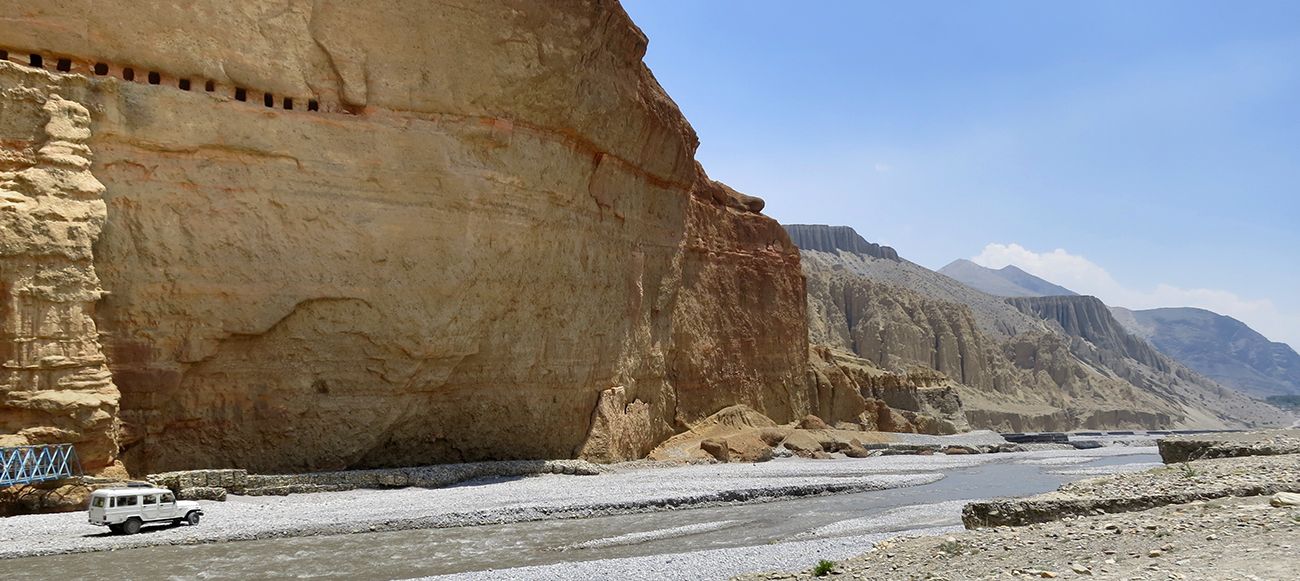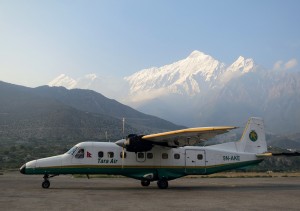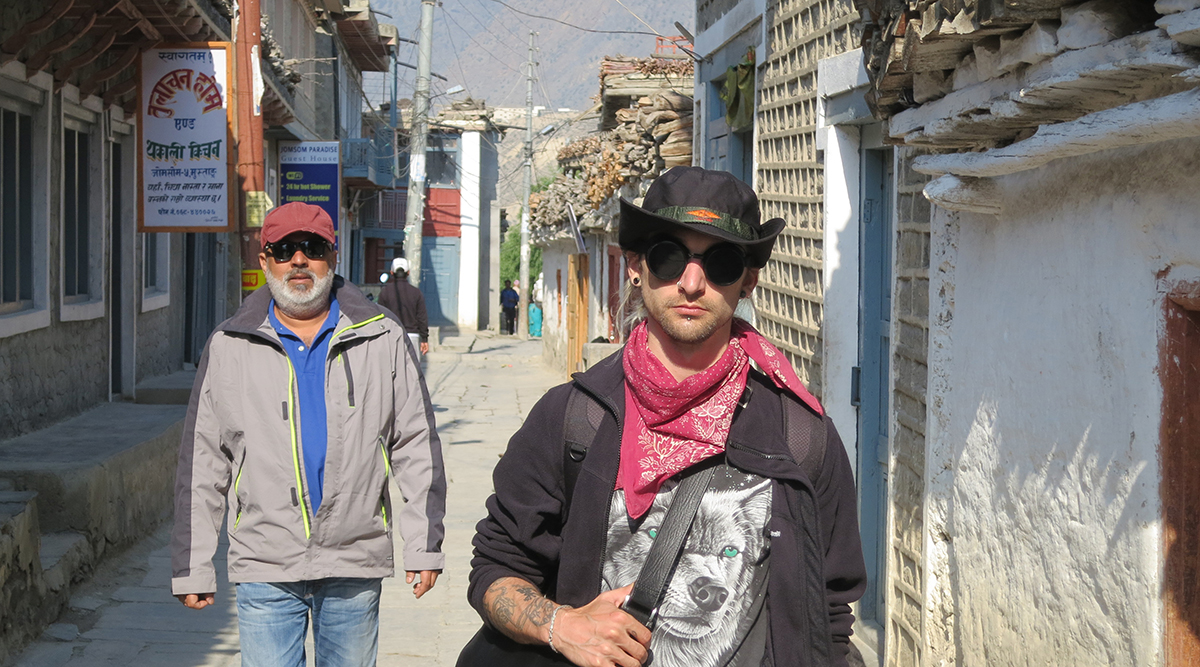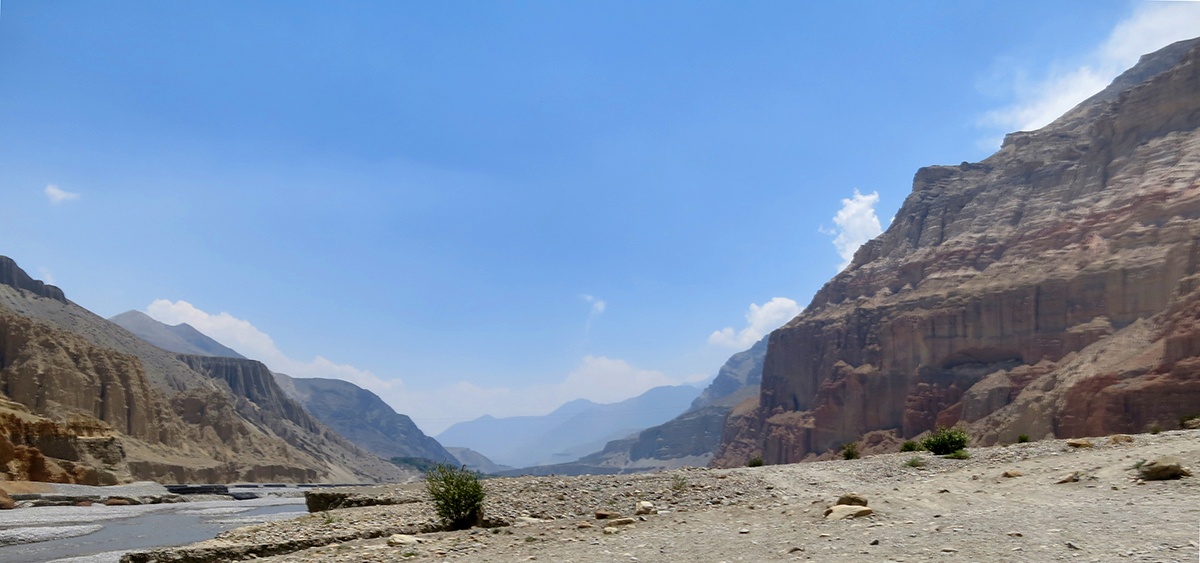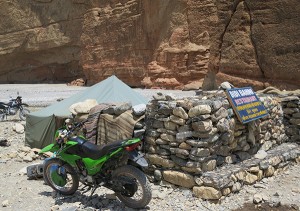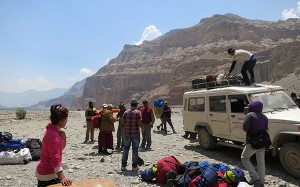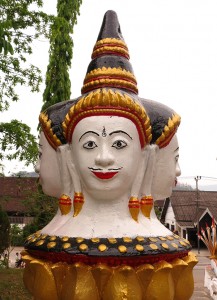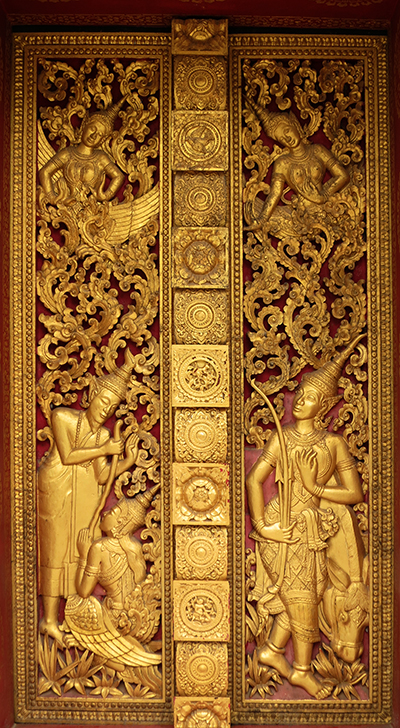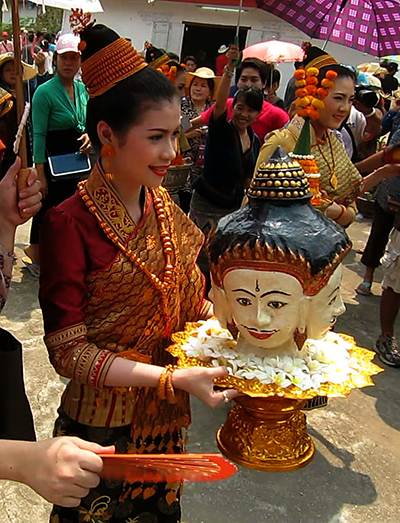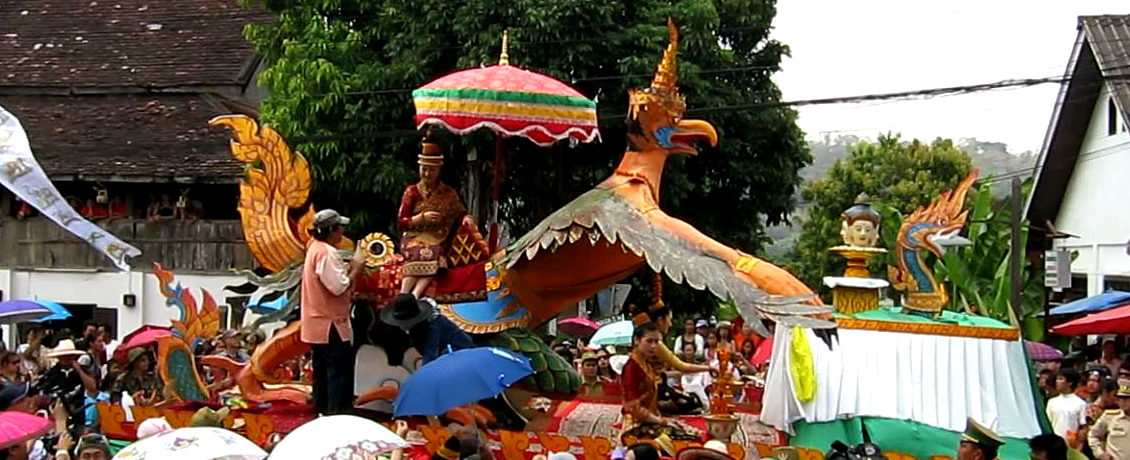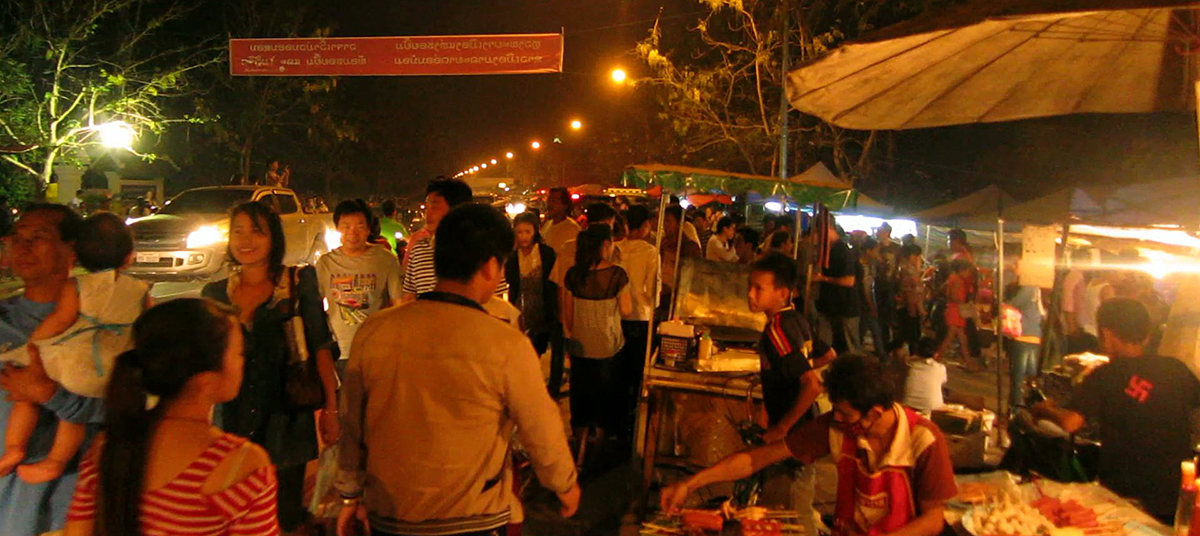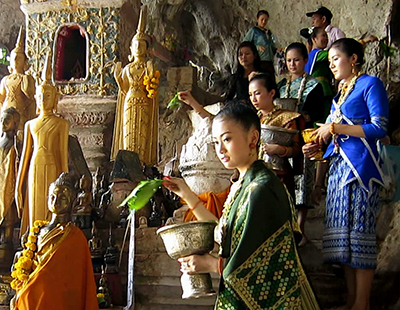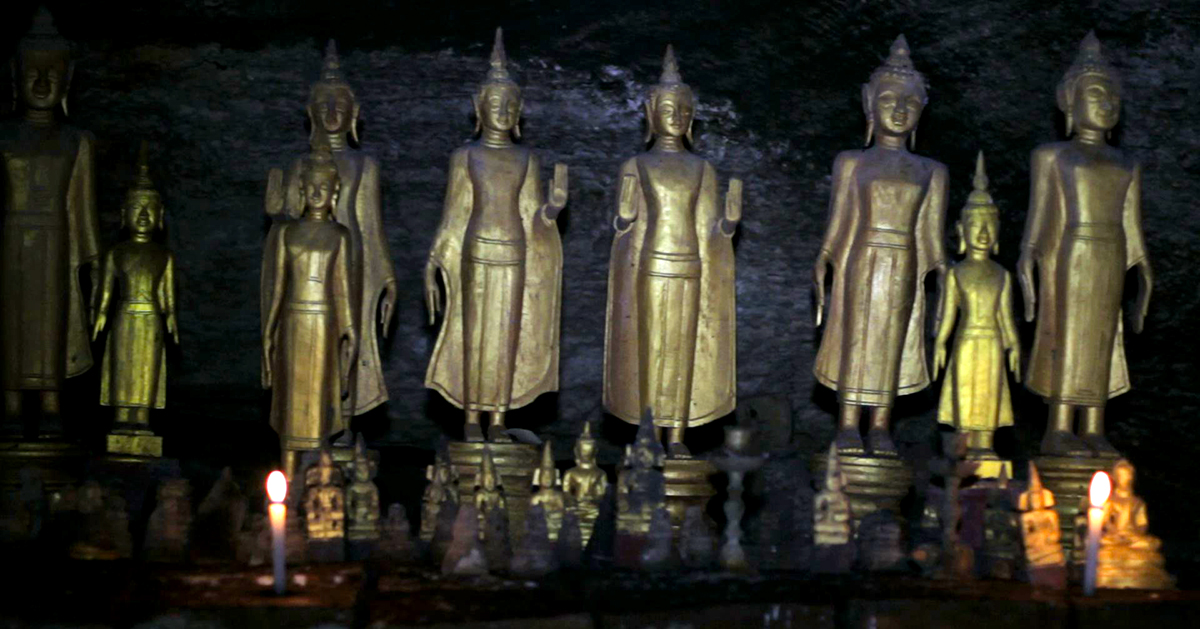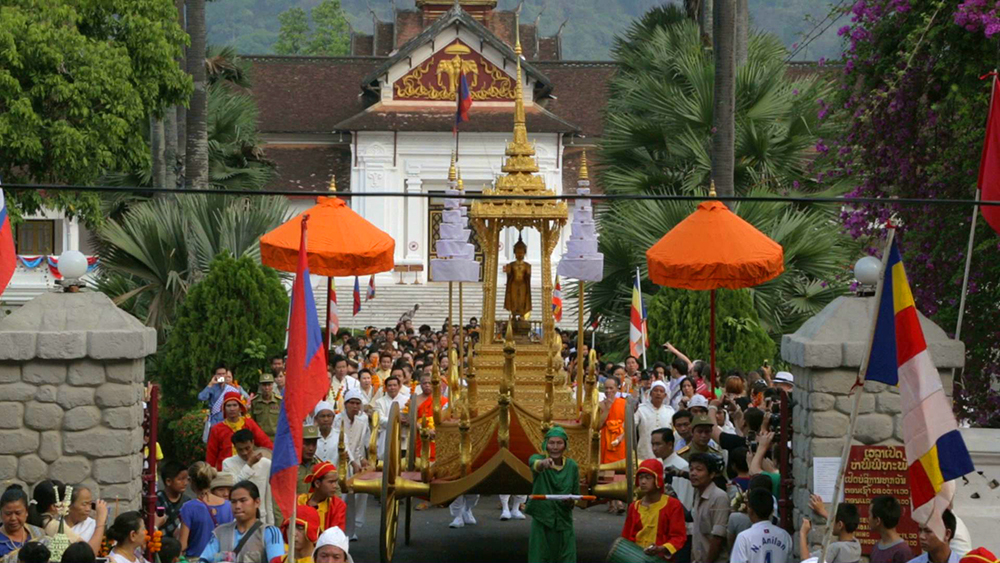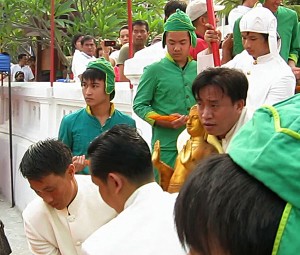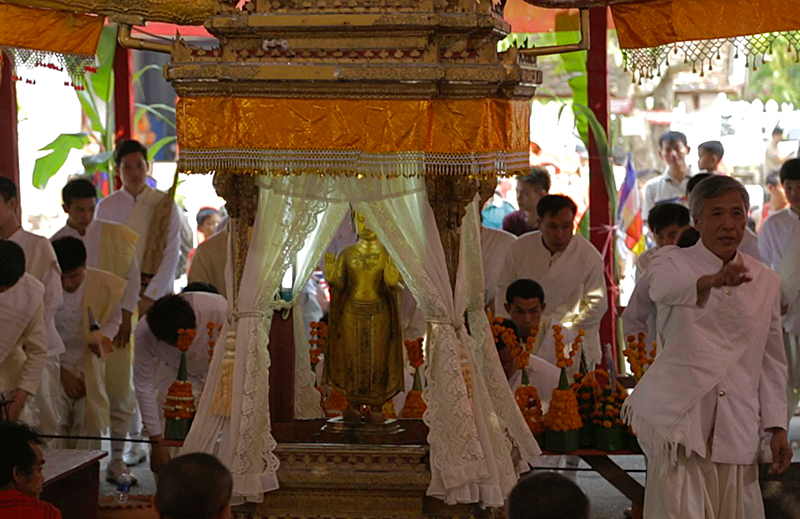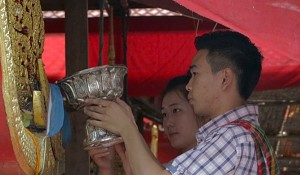“Where are the photographs?”
Even before I write this, I can hear you saying “If this encounter was such a big deal, where are the photographs?”
There are photographs and quite nice ones (if I do say so myself).
“No.” you reply. “What about inside the tent?”
Well, in my defence, all I can say is that sometimes you have to choose to be a participant rather than an observer. In some situations, pulling out a camera completely kills the delicate balance of the dialogue – and in this dim tent, huddled from the wind behind a set of stone gabions, sitting cross legged on ancient carpets, a camera would have killed the moment.
Let me first explain how we got there.
We three, that’s Raj, Cameron (known as Charlie in Asia because he can’t bare to watch his friends struggle to get their mouths around the name!) and myself, first flew from Kathmandu to Pokhara, stayed overnight and then left Pokhara by air early in the morning bound for Jomsom. All the flights must be in the morning because the wind is too severe after lunch.
Now this is amongst the strangest flights I have ever taken. The plane, the people the airports are all fairly predictable – but – from Pokhara to Jomsom, you only fly up. There is no down. Even on landing, there is no down. The plane simply levels out and it’s on the ground – like it has flown up a giant bookcase and just made the highest shelf.
Anyway, at Jomsom, a small town of rough stone and mud brick that clings to the edge of the airport, we awaited our guide, Hemraj, who, despite his best efforts, due to breakdowns and flat tyres had missed the first flight – but he managed to get a seat on the second – the round trip is not much more than an hour. So we had a meagre breakfast in the Marco Polo hotel and awaited his arrival.
Now it’s true that we had been wrong about the travel arrangements to get us to our goal, Lo Mantang – well, we had made assumptions based on our previous experience of traveling in isolated parts of Asia – which were wrong. However, it became clear later that Hemraj was also operating under a misapprehension based on previous experience of traveling this same road (I call it a road only for ease of expression – more a two day four wheel drive test track).
But upon Hemraj’s arrival, we donned our packs (two each for Cameron and myself – we shared out the tripods to our companions) and in high spirits walked for ten minutes or so through the village to the jeep stop. After the usual sort of argy-bargy our belongings were hurled into the back of a Mahindra jeep and we were on our way.
Now the details of that ride are scrambled in my head. The constant bumping, lurching and crashing of the jeep as it picked its way over the broken, boulder strewn path, ground up dizzying heights and rounded hair-pin bends with certain death on both sides rather upset my normal computer-like recording of the events around me (Have you ever been inside an industrial washing machine on spin cycle rolling down a mountain?). So, with your permission, I will leave that description for another time. Suffice to say that after a day and a half of slow upward progress, the jeep ground to a halt at the base of a huge clay cliff, at the edge of a wide gravel river, at the mouth of a small pedestrian bridge that led to the barren, uninhabited other side.
This spot is called Mustang Gate. I presume the name reflects the fact that this is the end of one jeep mafia’s territory and the start of another and it’s here that the passengers must be transferred from one mafia to another. This is also the spot that Hem (that’s short for Hemraj) finally worked out that the rules of the game had changed. There should have been a jeep waiting for us – but there was none. Worse, from this spot, there were no communications, only hearsay, guesses and the dogged optimism that flourishes when your only alternatives are abject misery and defeatism or stubborn optimism against all reasonable logic.
So we settled our belongings on the stony ground, planted ourselves in the brown plastic garden chairs that sat incongruously on the barren river bend and set our backs against the cold constant wind which was growing in intensity on its route up the gorge to Lo Mantang. And here we sat for some time discussing the possibilities. If a vehicle had left from this spot at the time the locals said, well, it would have already turned around and would be back with us in a couple of hours. This, they clearly would have done because, despite them deciding that they would not take bookings, indeed would not even honour those already taken, they had been made aware of our planned arrival and would surely come back rather than leave us in this exposed situation – surely. We studiously avoided any discussion of Plan B – no-one wanted a Plan B – actually, no-one had a Plan B.
Now, I have said that this spot was uninhabited, and on arrival that’s certainly how it appeared to us. But it’s interesting how time and circumstances can fundamentally change your perspective. As the wind grew stronger, to the extent that if you stood your chair was blown from under you and clattered across the stony ground to be wedged against a rock or become trapped in one of the many riverlettes that carved their way through this island of flat land, and the cold began to creep over us as the sun began to sink, the little ragged tent started to look most inviting. Now, not merely a tent, we realised that this welcome shelter was actually the Didi Bahini Restaurant of Mustang Gate and the owners had sent Hemraj out to invite us inside.
So, we grabbed our camera packs and with the wind in our ears, crunched our way across the stony ground to stoop low and enter the dimly lit tent.
Now, standing erect, I’m a very observant fellow. But, crouched and bending from the waist, struggling with ten kilos of cameras and moving in from the unfiltered glare of the sun at 3,000 metres to a dimly lit tent, my powers of observation were severely compromised.
As my eyes adjusted to the gloom inside the tent I saw my companions already sitting against the wall of the tent on narrow carpets behind low rectangular tables. They had left a spot for me next to Raj and as I stumbled forward I aimed my but at the space. As my backside hit the carpet I realised (too late) that the space was not wholly unoccupied. Something stirred beneath my knees and then as I turned my head a huge Cheshire Cat smile exploded in my face. Our noses were close enough to touch. Her legs were beneath my knees. Our companions laughed as we untangled ourselves – the two young ladies lying on mats at the back of the tent, the man with the intriguing Asian face and the permanent backpack, the man in the grubby blue coat as he shoveled dal bhut into his mouth with his hand, my two friends and the lady dressed in black close by my side as she settled herself next to me.
“She wants to know if you are married” Hem translated for me and knowing the marriage practices of the Lopas I emphatically announced that I was very married. More laughter.
“She says she doesn’t mind if you have another wife.”
I remained silent while Raj and Cameron grinned at my discomfort.
Then one of the young ladies chipped in with “Hey, how come she gets to choose?” and she laid claim to Cameron.
“What am I?” said Raj. “Just the left-overs?”
“Don’t worry” said the other young lady, “I’ll marry you and you can take me to India.”
At least, that’s what I think happened but since they all spoke Nepali and/or Hindi, we two westerners were left guessing what exactly they were saying.
Some-one new entered the tent and after a few words one of the young ladies climbed over a small table and set about making a meal at the low table and single gas burner.
As she set about her task, pausing to add her voice to the conversation I became mesmerised by her.
Now beauty is a difficult thing to define. Tall, flowing hair, tight bum, long legs, thin waist and big boobs – well that is a kind of beauty but the beauty that gets me owes its existence to character and this young lady, dressed simply, operating a kitchen in one of the least populated and most remote parts of the globe glowed with the beauty that comes from within.
An intense listener, her head pushed slightly forward, her lips parted a little, she gave 100% of her attention to the person speaking. She did not rush to respond, interrupt or talk over her companions. She waited for the full stop, straightened her back, took a breath and with her response, her face, her body and her hands moved with effortless grace.
A broad sweep of expression flowed across her face, playful and coquettish, serious and mock serious, now a warm smile and now a frown all the while her hands, arms and body moving in a graceful theatrical manner. This small space, this shelter from the wind and the cold was her stage and she the warm glow at its centre.
So despite our predicament, marooned in an isolated and inhospitable spot with our future unknown, we were happy to sit and not think about when or if a jeep would arrive to take us on the next part of our journey. If worse came to worse, this happy crew would surely have given us a solution.
But it didn’t come to that. Eventually we heard the grind of a four wheel drive differential as it bumped down the dirt track to our sanctuary.
Now there were people and noise. People climbing down from the jeep, their packs and belongings being unloaded and ours being loaded at the same time. Side deals being done to transport packs of Coca Cola on to the next town, locals negotiating a lift (at much less than the tourists pay) and before we knew it we were wedged in our seats with packs between our knees and bags upon our laps and headed upwards into the cold, pale afternoon sun to Lo Mantang.
